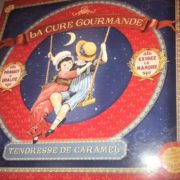The Antiseptic and Antibacterial Properties of Essential Oils: Nature’s Potent Healers

In a world increasingly leaning towards natural and holistic approaches to health, essential oils stand out for their remarkable therapeutic benefits. These concentrated plant extracts, known for their aromatic qualities, have been used for centuries in various cultures. Among their myriad of uses, their antiseptic properties are particularly noteworthy. From preventing infections to purifying environments, essential oils offer a natural alternative to synthetic antiseptics. This blog explores the science, efficacy, and practical applications of the antiseptic properties of essential oils, revealing why they are considered nature’s potent healers.
Introduction to Essential Oils
Essential oils are concentrated plant extracts that capture the natural scent and flavor, or “essence,” of their source. These oils are obtained through methods like distillation (often by steam) or mechanical methods, such as cold pressing. Once the aromatic chemicals have been extracted, they are combined with a carrier oil to create a product ready for use.
The Antiseptic Properties of Essential Oils: Nature’s Potent Healers
Plant oils extracted from plant body parts including leaves, flowers, stems, and roots, have commonly been used throughout history for their medicinal values. Therefore, it is still valid to say that they have a unique ability to perform the functions of an antiseptic. This blog post focuses on essential oils and provides detailed information on how they work, a scientific introduction to how the antiseptic property of essential oils occurs, and the uses of these properties.
Introduction to Essential Oils
Some of the common items include essential oils, which are obtained from plants, in their natural form and date back to their original scent or taste. These oils are produced by treatment with heat (usually steam distillation) or other techniques such as cold pressing. After the aromatic chemicals have been separated into their various components, they are blended with a carrier oil to make an end product.
Brief History
The use of essential oils can be dated back to the ancient people and even as remedies to many health issues. Ancient Egyptians used aromatic oils or what we today call essential oils in medicine and for body perfuming. Greeks and Romans in particular used them in their treatments and even as a process of ‘Bathing’. The people of Greece and Rome were not the only civilizations to use essential oils for medicinal purposes; such usage is recorded in the ancient Chinese and Indian practices of medicine as well.
Understanding Antiseptic Properties
Antiseptic agents also assist in preventing the production of any disease-causing bacteria. Essential oils should be relatively safe as they are antimicrobial due to the presence of various bioactive compounds that are toxic to microorganisms such as bacteria, viruses, yeasts, and fungi.
Key Antiseptic Compounds in Essential Oils
- Phenols: For their respective activities, thymol and eugenol-based compounds are present in the thyme and clove oil. It has polymorphonuclear leukocytes and they are loaded with antibacterial and antifungal properties.
- Terpenes: Some of the citrus oils that have limonene also have antibacterial effects, and pinene that is found in pine oil.
- Alcohols: Lavender oil contains linalool while geranium oil contains geraniol which has antimicrobial properties.
- Aldehydes: Citral: The antimicrobial properties of citral present in lemongrass oil has also been established, similarly cinnamaldehyde present in cinnamon oil is effective.
Scientific Studies and Evidence
Research has provided substantial evidence supporting the antiseptic properties of essential oils. Numerous studies have highlighted their effectiveness against a variety of pathogens.
Laboratory Studies
Laboratory studies have played a crucial role in elucidating the antiseptic properties of essential oils. These studies often involve testing the oils against a wide range of microorganisms to assess their antimicrobial efficacy.
- Tea Tree Oil: Extensive research has been conducted on tea tree oil, revealing its broad-spectrum antibacterial and antifungal properties. Studies have shown that tea tree oil is effective against methicillin-resistant Staphylococcus aureus (MRSA), a notorious and difficult-to-treat pathogen. It works by disrupting the permeability barrier of microbial cell membranes, causing cell contents to leak out, which leads to cell death. Additionally, tea tree oil has demonstrated antifungal activity against Candida albicans, a common cause of fungal infections in humans. The oil’s components, such as terpinen-4-ol, contribute significantly to its antimicrobial activity.
- Eucalyptus Oil: Known for its potent antiseptic properties, eucalyptus oil has been studied for its effectiveness against a variety of bacterial strains, including Escherichia coli and Mycobacterium tuberculosis. The main active component, 1,8-cineole (also known as eucalyptol), has been shown to possess strong antimicrobial properties. Laboratory tests indicate that eucalyptus oil can inhibit the growth of bacteria by disrupting their cell walls and inhibiting enzyme activity essential for microbial metabolism. Its efficacy extends to antiviral properties, with studies demonstrating its ability to inhibit the replication of certain respiratory viruses, thereby reducing their spread.
- Lavender Oil: Lavender oil is renowned for its soothing aroma and therapeutic properties. Laboratory studies have highlighted its effectiveness against several bacterial strains, including Staphylococcus aureus and Pseudomonas aeruginosa. The antimicrobial activity of lavender oil is attributed to its major constituents, such as linalool and linalyl acetate, which have been found to disrupt bacterial cell membranes and interfere with their metabolic processes. Moreover, lavender oil exhibits wound-healing properties by promoting tissue regeneration and reducing inflammation, making it an excellent choice for treating minor cuts, burns, and abrasions.
- Oregano Oil: Oregano oil is particularly noted for its strong antibacterial and antifungal properties. Laboratory studies have demonstrated its effectiveness against a range of bacteria, including Escherichia coli and Salmonella enterica. The oil contains high levels of phenols, particularly carvacrol and thymol, which have been shown to penetrate bacterial cell membranes and cause structural and functional damage. Oregano oil has also been effective against Candida species, making it a powerful antifungal agent.
- Lemongrass Oil: Lemongrass oil is another essential oil with significant antiseptic properties. Studies have shown that it is effective against both Gram-positive and Gram-negative bacteria, as well as various fungal strains. The primary components, citral and limonene, exhibit strong antimicrobial activity by disrupting the integrity of microbial cell walls and inhibiting their replication. Lemongrass oil has also been shown to possess antiviral properties, making it a versatile essential oil for combating a range of pathogens.
- Peppermint Oil: Peppermint oil has been extensively studied for its antibacterial properties, particularly against oral pathogens. Laboratory tests have demonstrated its effectiveness against bacteria such as Streptococcus mutans, which is associated with dental caries. The antimicrobial action of peppermint oil is largely due to its menthol content, which can disrupt bacterial cell membranes and inhibit their growth. Additionally, peppermint oil has been found to possess antiviral and antifungal properties, making it a multi-faceted antiseptic agent.
- Cinnamon Oil: Cinnamon oil, derived from the bark or leaves of the cinnamon tree, is known for its potent antimicrobial properties. Laboratory studies have shown that it is effective against a variety of bacteria, including Escherichia coli, Staphylococcus aureus, and Listeria monocytogenes. The primary component, cinnamaldehyde, has been found to inhibit bacterial cell wall synthesis and disrupt metabolic pathways. Cinnamon oil has also demonstrated antifungal activity against Candida species and other fungi.
These laboratory studies provide compelling evidence of the broad-spectrum antimicrobial activity of essential oils. Essential oils serve as effective natural antiseptics by disrupting cell membranes, interfering with metabolic processes, and inhibiting microbial replication. The ongoing research continues to explore their potential applications, paving the way for their integration into various health and hygiene practices.
Various existing studies document that essential oils have antibacterial properties. Many authors have reported on the efficiency of various types of disinfectants against different organisms.
Clinical Trials
Scientific studies have also emerged to confirm the efficacy of the uses of essential oils as was practiced in ancient times. For example, research into the management of acne using tea tree oil showed notable differences in the decrease in inflammation and number of bacteria in comparison to fake treatments.
Mechanisms of Action
The killing of microorganisms by essential oil can be explained by the interference with the normal architecture of the cell, which can result in the death of the microorganisms. Here are some mechanisms:
- Cell Membrane Disruption: Essential oils have toxic effects in which they destabilize the fluidity of bacterial cell membrane thus leading to the loss of cell contents and finally death of the cell.
- Protein Denaturation: It influences the structural stability of microbial proteins in order to modify their functionality and survivability.
- Interference with Metabolic Processes: Many essential oils can affect different metabolic activities in microorganisms, by preventing their growth and reproduction.
Practical Applications of Antiseptic Essential Oils
Therefore, it could be stated that due to their antiseptic properties, essential oils can be applied in many spheres of life, including medicine, household, etc.
Healthcare
- Wound Care: Some of the oils used in wound bandages include lavender, tea tree, and clove to avoid infections.
- Oral Hygiene: Anthony highlighted some of the active ingredients which are commonly used in the preparation of some mouthwash and toothpaste, like peppermint and eucalyptus; these are antibacterial in nature.
- Skin Care: They are incorporated into creams and ointments to help in the healing of acne, ringworm, and most skin diseases.
Home Care
- Natural Disinfectants: Lemon oil, tea tree oil, and thyme oil are some of the oils that consumers can use to prepare disinfectant liquids for wiping surfaces.
- Air Purification: Antimicrobial methodology: spreading eucalyptus and lavender essential oils can reduce airborne germs and pathogens.
- Laundry: Diluting essential oils into a few drops and placing them in the laundry can also serve as a natural disinfectant, as well as impart a good smell.
Safe Use of Essential Oils
There is, however, a risk if essential oils are not kept safe as there are side effects associated with their use.
Dilution
Essential oils are very potent and should not be applied directly to skin, they must first be blended with a carrier oil (some of which include coconut oil or olive oil). Another thing to consider when diluting oils is ratio, it usually ranges from 2-3 drops of the essential oil per teaspoon of carrier oil.
Patch Testing
Make sure to do a skin patch test when introducing new oil to determine the possible side effects. Dilute oil at a ratio of 1: 9 and apply a small amount on the skin and avoid reapplication for the next 24 hours to determine whether an allergic reaction is evident.
Ingestion
The intake of essential oils is safe but should only be done with the guidance of a medical practitioner since some might pose harm when taken internally.
Storage
Keep essential oils in glass containers and preferably keep these containers out of reach of direct sunlight or extreme heat to preserve their efficacy and longevity.
Conclusion
Due to their antibacterial properties, essential oils can be employed in both conventional and novel therapeutic medicines. Thus, the possibility of their application to prevent penetration and growth of a wide range of pathogens indicates the potential of these products as natural substitutes for chemical antiseptics. Essential oils cut across a wide range of uses in wound care, personal hygiene, cleaning, and personal sanitation to delineate a few uses of essential oils. But, unequivocally the more people learn through ever-accelerating research, the more the extraordinary power of these ethnobotanical plant extracts will begin to realize that holistic health is still a very potent place to be.





















Leave a Reply
Want to join the discussion?Feel free to contribute!